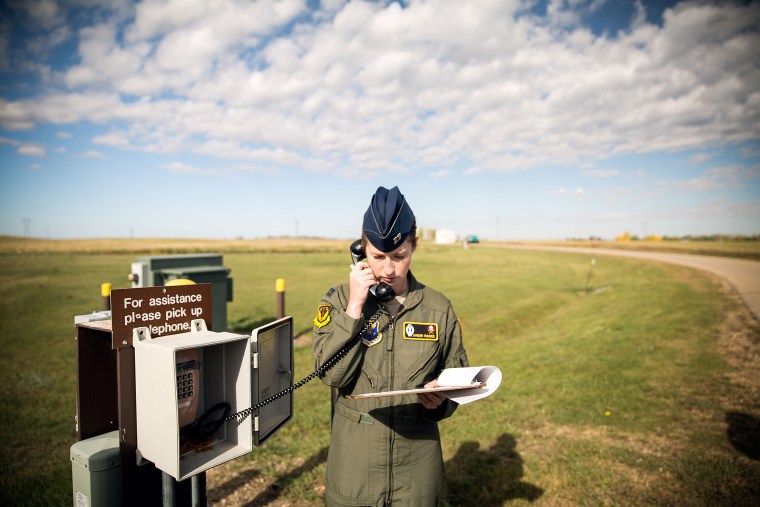MINOT, N.D. — Buried more than 60 feet below the North Dakota plains, two women sit in front of a panel of blinking lights, switches and classified code books.
For 24 hours straight, they will fill the time as they do most workdays — by studying for advanced degrees, drinking tea, reviewing protocol, and trading gossip and sleep shifts.
But if the call comes to deploy the most catastrophic weapons ever created, they'll be ready.
"If I'm being ordered to key turn, that means that there's somebody else that is more than willing to destroy everything that we live for here in the United States," said Air Force Capt. Erika Weitgenant.
"So I'm going to do everything that I can and I'm going to do my part, what I've been ordered to do...I'm going to do whatever I can to make sure that our way of life survives here."
Weitgenant and her colleague Capt. Marian Dinkha are Nuclear and Missile Operations Officers, but everybody in the Air Force calls them "missileers." They are calm, serious and dedicated to their mission: deterring nuclear attack by America's enemies by standing ready to launch the nation's 450 nuclear-capable intercontinental ballistic missiles (ICBMs).
Every day, 24 hours a day, in blast-proof chambers hidden deep beneath pastures and farmland, some 90 missileers monitor ICBMs buried in separate sites miles away. The weapons are siloed near Air Force Bases in rural, sparsely populated parts of the West.
ICBMs can deliver nuclear warheads to targets up to 8,000 miles away; Moscow, Pyongyang and Beijing are all within range. This August, amid tension with North Korea, the Air Force successfully test-launched an ICBM that flew about 4,200 miles, from California to the Marshall Islands in the Pacific. The missiles maintained by the U.S. military can travel 20 times the speed of sound and reach targets on other continents in less than an hour.
But the only sign that nuclear missiles are buried near Minot, where the Air Force has a base, are the occasional tall white beacons that shoot up from the plains.
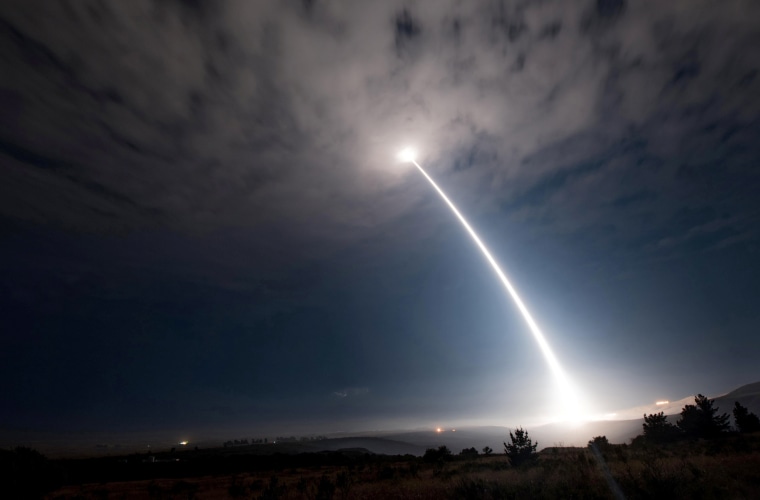
Air Force missileers have stood watch over our nuclear weapons since the 1970s. While women remain a minority in the military, the Air Force population is 20 percent female, the highest of any branch. Four out of five missileers are men, but there are 247 women. As first reported by Marie Claire, there are enough women in this life-or-death job that there has been at least one all-female shift at one of the launch emplacements.
The Life of a Missileer
Missileers undergo months of intense training and are expected to know nuclear launch protocol by heart. Most live in remote towns in the vast, empty flatness of the northern Great Plains, where winters can be brutal.
Their shifts can be grueling. Missileers stay underground, behind 4.5-ton blast doors, for 24 hours at a time, with only each other to talk to. There's no fresh air. The light is artificial, the food not great. The protocol they've memorized is complicated. At any moment, the call could come down.
Capt. Dinkha, fluent in several languages, dreamed of being a linguist or an intelligence officer for the Air Force. When she was assigned to a missileer unit, she cried.
"I didn't put it anywhere on my dream sheet, I'll be honest," she said, adding that she had to reconcile herself to the reality of the job. "I did want to serve my country."
Capt. Amber Moore is another missileer based in Minot. As she brushed her horse Dakota, her toddler gurgled in her husband's arms. "It's such an important mission," she said. "My son and my husband are a part of that. It gives me a little bit of assurance that when I'm out there, I'm completing a mission that keeps them safe."
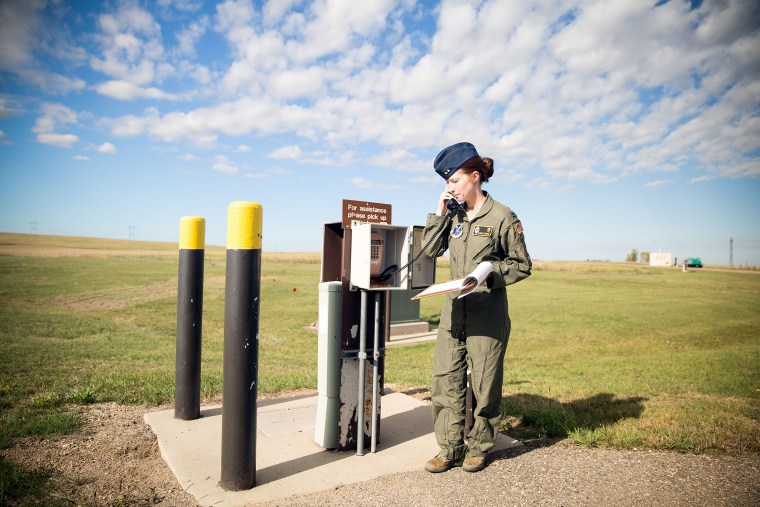
She goes to the riding club on the Air Force base to unwind. "It can get stressful. We can have long days. It's important to just come here and relax," she said. Between the 24-hour shifts of "pulling crew," as they call it, the female missileers of Minot go to the movies, go shopping, study, and raise families.
Dinkha, Weitgenant and Moore are expected to do what perhaps most Americans could not imagine doing: launch nuclear weapons at unknown targets, knowing full well the devastation that they cause.
Critics have worried about the potential for nuclear conflict during the Trump administration, concerned the president could use his nuclear trigger finger as freely as his Twitter finger. Fears spiked again last week, when President Donald Trump issued a warning to North Korean dictator Kim Jong-Un over Twitter: "I too have a Nuclear Button, but it is a much bigger & more powerful one than his, and my Button works!"
According to NBC News, intelligence officers believe North Korea has successfully created a miniaturized nuclear weapon small enough to mount on a missile. But the missileers don't pay much attention to the day-by-day one-upmanship.
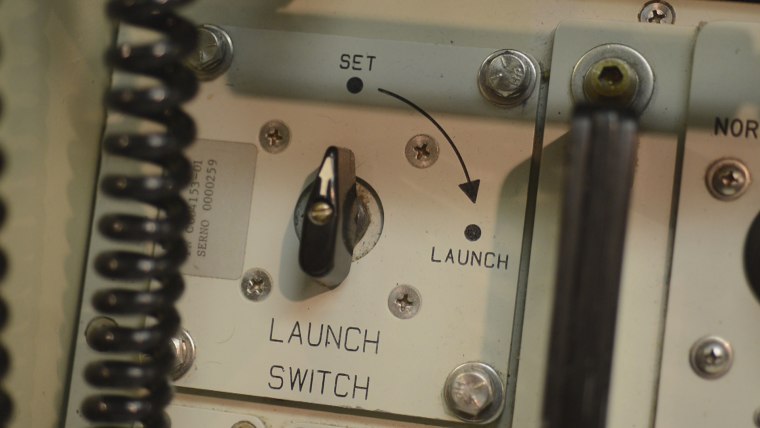
"The rhetoric has upped, but we're continuing our job as normal," Dinkha said.
"We watch the news," Weitgenant said. "But I know for us, we're just going to keep doing what we've been doing for the last 30 some years, which is to train hard and absolutely be ready to do our job, if that be the case."
The launch process is complicated, and some of it remains a secret. But the multistep sequence hasn't changed in decades.
Once missileers receive an encrypted nuclear code from the White House, they work together in what's called "Two-Person Control" that ensures one individual can't launch a missile on her own. Two missileers open a safe secured by two padlocks, but only they know the combinations to their respective locks.
The safe contains a secret code that the encrypted message must match. Again, each member of the pair only knows half the sequence.
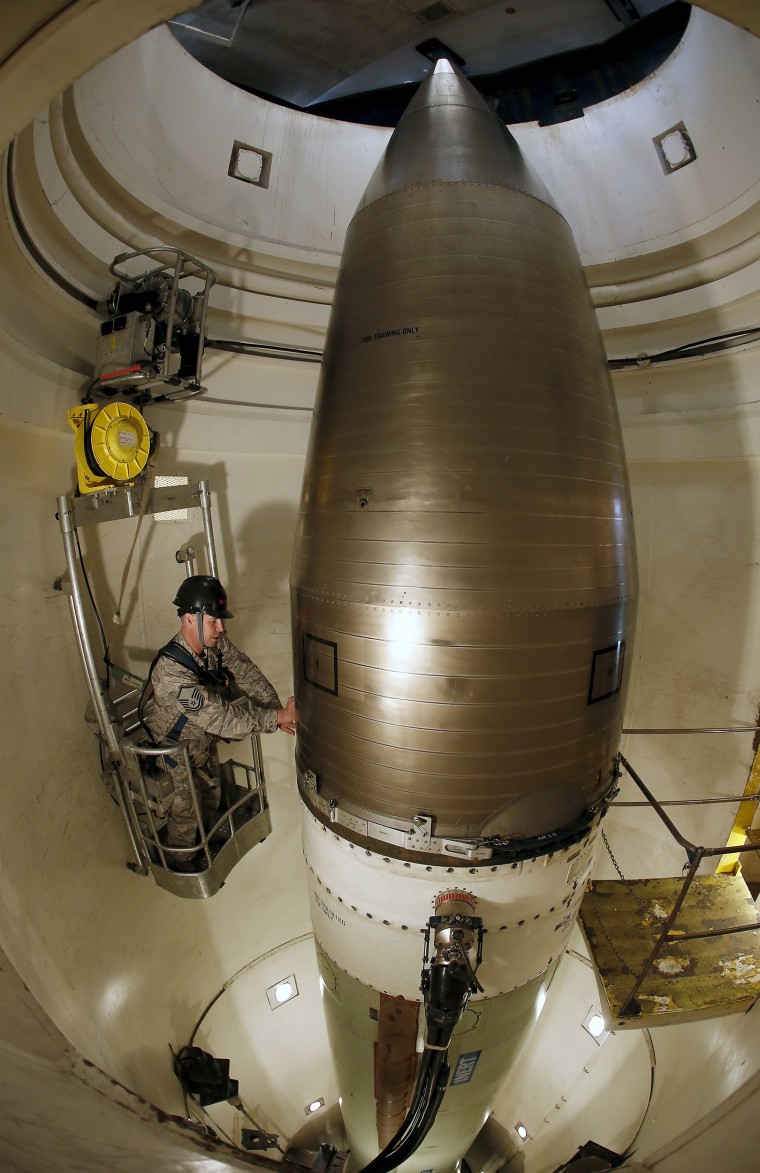
"If they match, it means that it's an authentic order from the president," Dinkha said. "If for whatever reason those values don't match, then we won't take any actions on it."
If the code does match, each missileer turns her key, at the same time, to launch.
"There's no red phone like people like to imagine," Dinkha said. "In terms of key turning, you need to have two people, obviously, to do it — just to prevent someone going rogue and doing it on their own."
Should the day come, however, Dinkha says she and the other missileers of Minot are ready.
"If it's a valid message," she said, "we will absolutely key turn on it."
